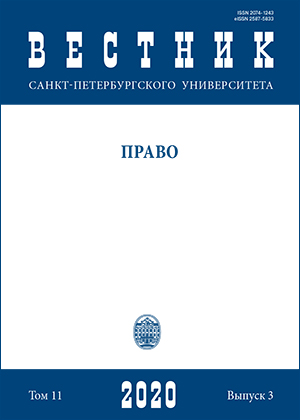The features of Japanese labour law
DOI:
https://doi.org/10.21638/spbu14.2020.310Abstract
This article considers the peculiarities of Japanese labour law that differ the most from the traditional Russian approach to labour regulation. The authors sought to fill the information vacuum in Russian legal scholarship dedicated to Japanese law, as well as to examine the unique features of this branch of law. It is impossible to consider, in one article, an exhaustive list of questions about Japanese labour law, which are of interest to researchers. Therefore, the choice of topics for analysis was dictated by two types of considerations: the uniqueness of Japanese regulation and the relevance of the topic to Russian reality. Within the first group, the authors examined the peculiarities of the arrangement, modification, and termination of employment contracts in addition to the features of the wage structure. Also, the practice of exercising the employer’s right to order the employee to stay at home while continuing to pay wages is analysed due to the absence of a clause in Japanese law on the right of the employee to be provided with work. In the second group, the issue of an employment policy for elderly people in Japan was considered as it is relevant for Russia in light of the recent pension reform. The methodological basis of the study was the use of a functional comparative method. The use of this method allowed the authors to ascertain greater flexibility in Japanese labour law regarding changes in working conditions, and a higher degree of labour mobility in comparison to Russia.
Keywords:
labour, labour law, Japan law, employment contract, pre-retirement age, wage
Downloads
References
Downloads
Published
How to Cite
Issue
Section
License
Articles of "Vestnik of Saint Petersburg University. Law" are open access distributed under the terms of the License Agreement with Saint Petersburg State University, which permits to the authors unrestricted distribution and self-archiving free of charge.






